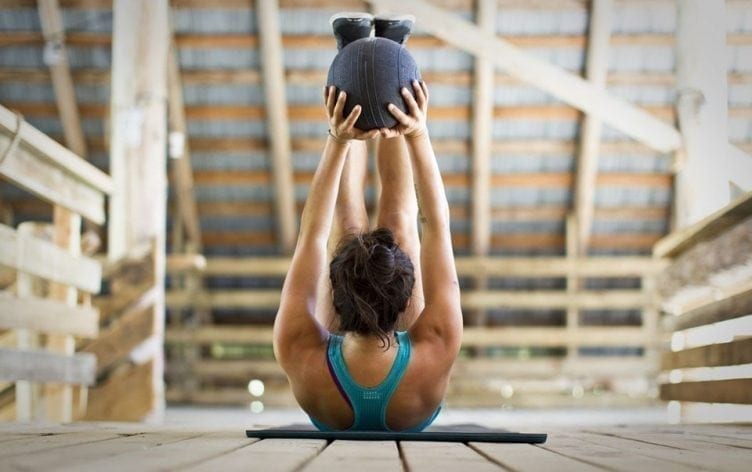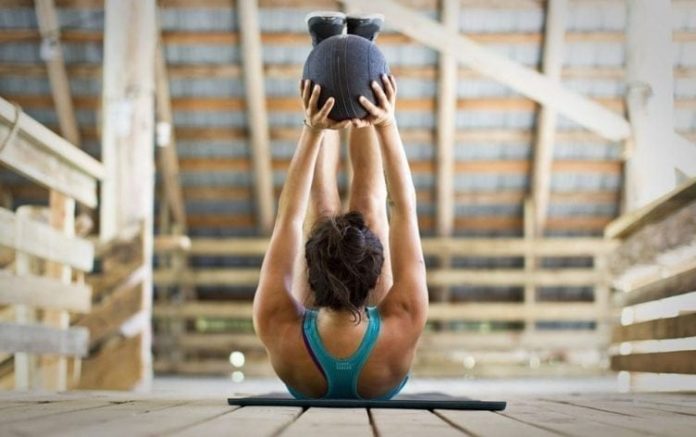
There are few feelings better than the one you get after conquering a solid workout. And while you might feel great and have been slaying it in the gym even harder than Kylie Jenner on Instagram, there’s one teensy issue—you’re  not seeing the rad results you were hoping for. It happens, and it sucks.
not seeing the rad results you were hoping for. It happens, and it sucks.
There are a few non-negotiables when it comes to making fitness gains: you have to do some sort of training (on a semi-regular basis) and you need to keep up a healthy, balanced diet. But if you’re looking to maximize your next training session, here are seven workout “rules” you can totally ignore:
Rule #1: You should never eat before a morning workout.
Fact: Your body needs fuel to function. “People think they’ll burn more fat in the morning if they don’t eat before a workout,” says Jessica King, head coach at Peloton Cycle. “If you’re going to wake up and do an intense workout, try eating Ezekiel toast (it’s made with sprouted grains) with almond butter, a hardboiled egg, or a smoothie.” Eating something with carbs and protein will make sure your body has enough energy to power through your routine. Here’s what a registered dietitian recommends eating before (and after) a workout.
Rule #2: You should only stick to one type of workout.
Fact: There’s always more than one way to get where you want to go. “If you’re looking to gain muscle, one of the best things you can do is change up your routine,” says wellness and fitness expert Adam Rosante, author of The 30 Second Body: Eat Clean, Train Dirty & Live Hard. “The body is incredibly proficient at adapting to stress. So, if you’ve been doing the standard 3 sets of 12 reps for a while, switching things up will lead to really impressive gains.”
Rule #3: You shouldn’t do anything that resembles a workout on your rest day.
Fact: Rest days are about giving your body time to recover and your muscles the opportunity to repair. Everyone defines rest differently. YOU DO YOU! So that doesn’t have to mean sitting on the couch all day (no judging if you want to though!). A rest day can involve some light walking, restorative yoga, and a whole lot of foam rolling.
Rule #4: Logging miles on the treadmill is the best way to burn calories.
Fact: First things first, typical cardio workouts are important, especially if you’re training for an endurance event. But, if you want to mix things up, circuit routines that involve lifting weights or moving through bodyweight exercises at a quick pace are also great for building strength and burning fat. And building muscle is important for calorie burn—while cardio burns more calories per minute, lifting weights can help you burn more calories after the workout ends. Read more about which is better for weight loss, strength or cardio, here.
Rule #5: You have to be sore after a workout.
Fact: If you’re not seeing progress you may think that you need to go harder—so hard you feel the burn for days after your workout. But soreness is not an indicator of results, explains Rosante. Your level of post-workout soreness can be a direct result of a slew of factors, ranging from the types of exercise you’re doing to your quality of recovery. Sure, you’ll want to step things up, but don’t feel like you need to push your body to an extreme in order to see gains.
Rule #6: When performing a squat, never let your knees go past your toes.
Fact: You’ve heard it time and time again. But according to Holly Perkins, CSCS, creator of The GLUTES Project, following this “golden rule” could actually be detrimental to your form and limiting your mobility for a perfect squat or lunge. And remember, proper form leads to better results. Some people are just built differently and the truth is, at the very bottom of a squat, your knees can go slightly beyond your toes, says Perkins. “The key here is not to let your knees extend so far forward that you put undo pressure on them, so there is a small range that is acceptable.” So while your knees are important, focus on really pushing your butt back and down and keeping your weight in your heels throughout the movement.
Rule #7: You should never exercise at night.
Fact: Many people think that exercising in the evening will make it difficult to fall asleep. While it does increase your energy levels, it doesn’t necessarily mean you won’t be able to turn off once your head hits the pillow. “I have clients that prefer to work out at night because it is their way to unwind after a stressful day. If anything, the workout will help him/her sleep better,” says Perkins. “And a yoga session at night could be exactly what an insomniac needs, or a long run might be the outlet of stress that you need in order to sleep well.” Ultimately, timing is important when it comes to seeing better results, because the best workout is the workout you actually get to (consistently). If you’re not a morning person, evening workouts are perfect.
—By Emily Abbate
















